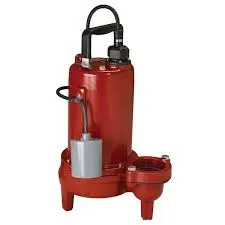Danish
- Afrikaans
- Albanian
- Amharic
- Arabic
- Armenian
- Azerbaijani
- Basque
- Belarusian
- Bengali
- Bosnian
- Bulgarian
- Catalan
- Cebuano
- Corsican
- Croatian
- Czech
- Danish
- Dutch
- English
- Esperanto
- Estonian
- Finnish
- French
- Frisian
- Galician
- Georgian
- German
- Greek
- Gujarati
- Haitian Creole
- hausa
- hawaiian
- Hebrew
- Hindi
- Miao
- Hungarian
- Icelandic
- igbo
- Indonesian
- irish
- Italian
- Japanese
- Javanese
- Kannada
- kazakh
- Khmer
- Rwandese
- Korean
- Kurdish
- Kyrgyz
- Lao
- Latin
- Latvian
- Lithuanian
- Luxembourgish
- Macedonian
- Malgashi
- Malay
- Malayalam
- Maltese
- Maori
- Marathi
- Mongolian
- Myanmar
- Nepali
- Norwegian
- Norwegian
- Occitan
- Pashto
- Persian
- Polish
- Portuguese
- Punjabi
- Romanian
- Russian
- Samoan
- Scottish Gaelic
- Serbian
- Sesotho
- Shona
- Sindhi
- Sinhala
- Slovak
- Slovenian
- Somali
- Spanish
- Sundanese
- Swahili
- Swedish
- Tagalog
- Tajik
- Tamil
- Tatar
- Telugu
- Thai
- Turkish
- Turkmen
- Ukrainian
- Urdu
- Uighur
- Uzbek
- Vietnamese
- Welsh
- Bantu
- Yiddish
- Yoruba
- Zulu
Telephone: +86 13120555503
Email: frank@cypump.com
nov . 08, 2024 19:59 Back to list
what is a septic tank pump
What is a Septic Tank Pump?
A septic tank pump is an essential component of a septic system, which is a common method of wastewater treatment used in rural and suburban areas where traditional sewage systems are not available. Understanding the role of a septic tank pump, how it operates, and its maintenance requirements is vital for homeowners relying on septic systems to manage their wastewater effectively.
How a Septic Tank Works
Before delving into the specifics of a septic tank pump, it's important to understand how a septic tank functions. A septic system typically consists of a septic tank, a drain field, and a network of pipes. Wastewater from the household flows into the septic tank, where it separates into three layers solids (sludge) settle at the bottom, lighter materials (scum) float on the surface, and the middle layer consists of partially clarified water. The scum and sludge must be periodically pumped out to keep the system operating efficiently.
The partially treated wastewater then flows from the septic tank to the drain field, where it percolates through the soil for further natural filtration before reaching the groundwater.
Purpose of the Septic Tank Pump
The primary function of a septic tank pump is to move wastewater from the septic tank to the drain field. This is especially crucial when the drain field is located at a higher elevation than the septic tank, which is often the case in hilly or uneven terrains. In such situations, gravity alone is insufficient to push the wastewater through the system, and that’s where a pump becomes necessary.
Types of Septic Tank Pumps
There are mainly two types of pumps used in septic systems effluent pumps and grinder pumps.
1. Effluent Pumps Designed to pump the liquid effluent that exits the septic tank to the drain field. These pumps manage larger particles that may be present in the effluent but are not designed to handle solid waste.
what is a septic tank pump

2. Grinder Pumps These pumps are more powerful and can break down solid waste into smaller particles before pumping it out. They are typically used in systems where wastewater must travel longer distances or to higher elevations.
Maintenance of a Septic Tank Pump
Regular maintenance of the septic tank pump is critical for its longevity and efficient operation. Homeowners should consider the following tips
- Regular Inspections It’s advisable to have the septic system, including the pump, inspected annually by a qualified professional. They can identify potential issues before they escalate.
- Pump-Out Schedule The septic tank should be pumped out every 3 to 5 years, depending on household size and water usage. Neglecting this can lead to eventual backup, which can damage the pump.
- Avoiding Overloading Be mindful of the amount of water being sent to the septic system. Excessive usage can strain the pump and the entire septic system.
- Proper Waste Disposal Only human waste and toilet paper should be flushed. Items like grease, non-biodegradable materials, or chemicals can harm the septic system and lead to pump failure.
Conclusion
A septic tank pump plays a pivotal role in maintaining the functionality of a septic system, helping to ensure that wastewater is effectively transported to the drain field. By understanding how this vital component works, along with its maintenance needs, homeowners can better protect their septic systems, thereby enhancing their home's inefficiency and renouncing potential costly repairs. Taking proactive measures can lead to a longer-lasting and more effective septic system, contributing to both environmental protection and public health.
-
ISG Series Vertical Pipeline Pump - Chi Yuan Pumps Co., LTD.|High Efficiency, Energy Saving, Low Noise
NewsJul.30,2025
-
ISG Series Vertical Pipeline Pump- Chi Yuan Pumps|High Efficiency&Low Noise
NewsJul.30,2025
-
ISG Series Vertical Pipeline Pump-Chi Yuan Pumps Co., LTD.|High Efficiency&Energy Conservation
NewsJul.30,2025
-
ISG Series Vertical Pipeline Pump - Chi Yuan Pumps Co., LTD.|Advanced Hydraulic Design&Energy-Efficient Solutions
NewsJul.30,2025
-
ISG Series Vertical Pipeline Pump - Chi Yuan Pumps Co., LTD.
NewsJul.30,2025
-
ISG Series Vertical Pipeline Pump - Chi Yuan Pumps Co., LTD.|energy-efficient fluid handling&industrial durability
NewsJul.30,2025










